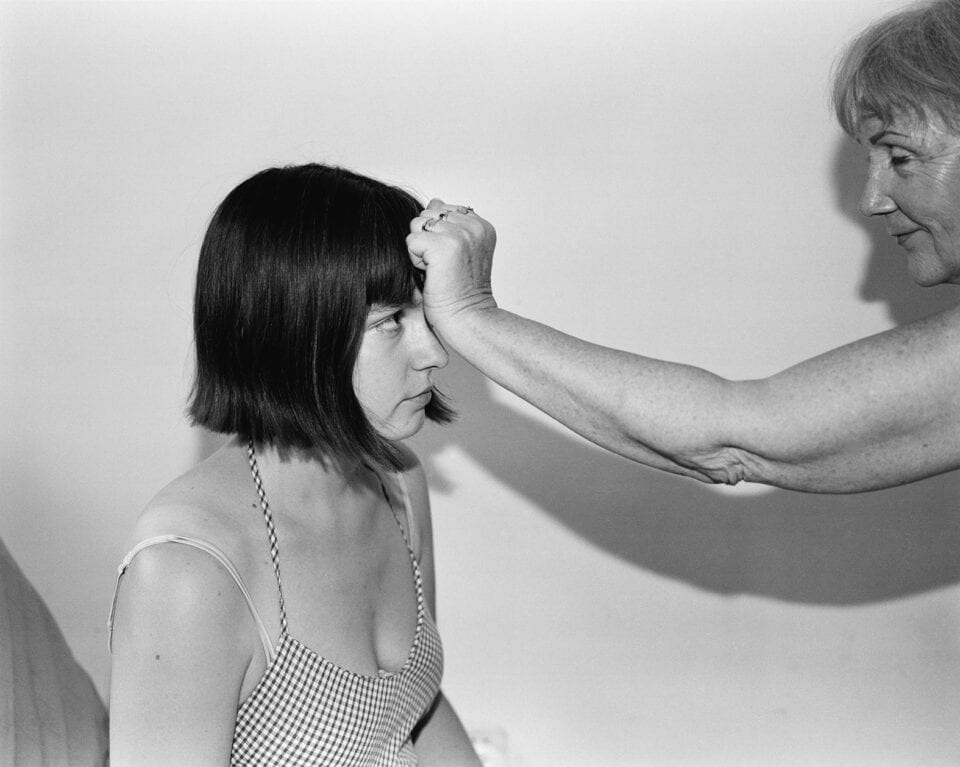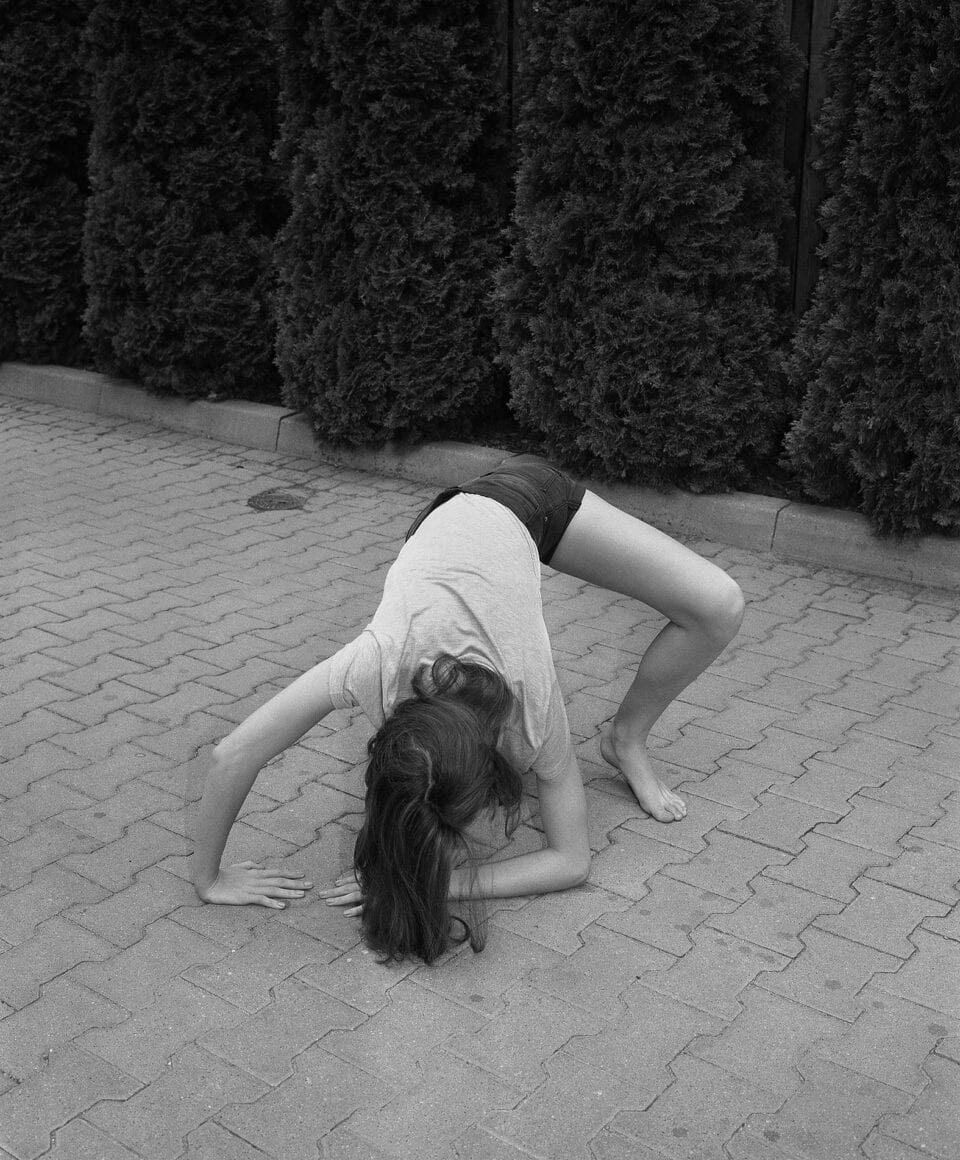The title of Joanna Piotrowska’s new collection, Stable Vices, yields many possible readings. A vice could be a bad habit, or a tool for gripping objects tightly. Both interpretations suggest entrapment, which emerges as a key theme across the four, mostly black-and-white sequences of photographs included in this new book from MACK.
The first, untitled set of photographs shows the postures taught to women in self-defence manuals, each subject suspended in an unnatural pose, as if contorted by some malign spell, arms or faces sometimes gripped by an anonymous male hand. As Sara de Chiara notes in her introductory essay: “these precarious poses, excessive gesturing and movements that seem to be suddenly executed, communicate a state of emergency, as if they were reflex actions to something that remains unknown to the viewer.” One theme at stake in Piotrowska’s work is western cultures of violence towards women, and how this is encoded through body language. In this sense, the most significant compositional feature of the series is the erasure of the attacker’s identity. Women’s bodies are warped into positions of discomfort by forces we cannot perceive or identify: such are the dynamics of structural misogyny.

At the same time, the motif taps into a wider concern in Piotrowska’s practice with systems of hidden or implicit control. In the second section we find dens and shelters built out of household objects placed in the centres of neat domestic spaces: a ring of seats around a sofa cushion, a blanket draped over a writing desk, duvets and clothes suspended across the spaces between high-chairs, drying racks and electric fans. The viewer’s first association might be with childhood hide-outs, but the glassy-eyed stares of the figures who gaze from their enclosures suggest a sense of constraint within household spaces and routines.
Dorota Masłowska’s counterpointed essay recalls a childhood of stifled imagination, seemingly in 1980s Poland, during the final years of Communist rule: “The eighties, an enormous slab of an apartment block and a baby boom. A thousand generations of residents with similar furniture similarly arranged.” Den-making comes to stand, perhaps, for a displaced reaction to political and cultural repression: “what inclines someone to build a room within a room? A home within a home? Walls among walls and a ceiling under a ceiling? Is it some creative horror vacui, an urgent desire to make something that is supposed to organise the emptiness, both physical and meta-physical?” These images take on new resonance in the current era of rising right-wing nationalism, typified in Poland through the rise of the ruling Law and Justice Party.

Shifting the connotations of malign power, Piotrowska then transports us to the empty enclosures of Poznan Zoo, capturing some of the sites and paraphernalia (ropes, hooks, gloves) of our domineering relationship with non-human life. What, as Joanna Bednarek suggests in her accompanying essay, are the ethical terms and justification for this relationship? And what happened to the animals? Is the evacuation of the cages a signifier of mass extinction, or does is the point to shift focus from the animals to us, the architects of their entrapment?
A final set of images, including colour portraits of faces in mirrored reflection, suggests more intimate concerns, including family relationships and modes of self-perception. Throughout this text, we are drawn into a position of uncomfortable familiarity with the faces and bodies on display, wondering who these subjects are, and what hidden forces compel them.
Find out more here.
Words: Greg Thomas
All images courtesy Joanna Piotrowska and MACK.







